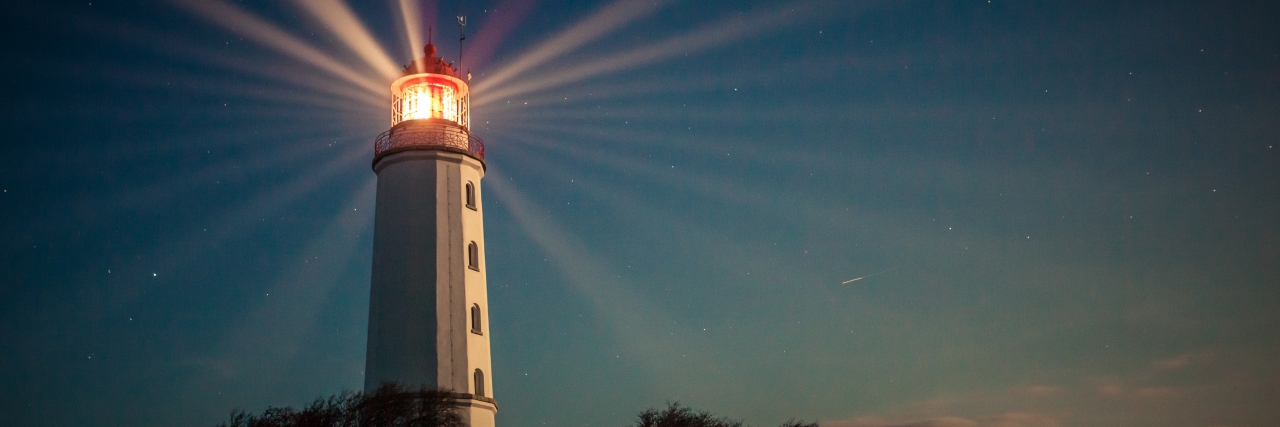There’s something magical about a lighthouse. Something peaceful. Something melancholy. Something hopeful. Hope, that land is near. Hope, that you’re not alone, that you’re not lost at sea. I’ve always loved lighthouses. I remember when I saw my first one. It was shortly after I moved to Washington state from Montana where I grew up. It was called Point No Point, and it was all of those things to me. It was peace, there was a little bit of melancholy, and was always a place of hope.
I explored the outdoors in the Pacific Northwest just like I had back home and found wonderous things I had never seen before. I got a job as a bartender in a fine dining restaurant, so I worked late. I had the days to explore. I went to this beach often, to think, to walk, to sit in a special kind of environment I had always felt drawn to. I believe it was the first lighthouse I had ever seen, not many of those in Montana. I don’t live near that beach anymore. Today I live on an island with my husband and two kids. One of which was born with a rare disease called CTNNB1. I still think about the Point No Point lighthouse because of my brilliant friend, Mike Graglia, whose son’s rare disease inspired him to start an advocacy group called SynGAP Research Fund. In an interview on my podcast recently, Mike spoke of his “lighthouse” concept – the idea that what he is doing with his advocacy is building a digital lighthouse where he gathers the researchers, the clinicians, the diagnosed families, the undiagnosed families, and all the others in the SynGAP space. His idea of thinking about it like a lighthouse, trying to get all these people to gather and think about their gene and send out a constant beacon flashing “we’re here, we’re here, we’re here” got me thinking too, about how many more lifesaving jobs that lighthouse has.
Almost everyone in the rare disease world will tell you things about the beginning of their journey. It is striking how many of their stories paint a kind of lost-at-sea scenario. Does this sound familiar? You feel like you’re on a tiny rock out in the middle of the vast, dark ocean. Maybe there isn’t a rock at all. Maybe you’re treading water, just trying to keep your head above water. The stormy seas that bring waves and wash the tides in and out are a way to measure the level of difficulty you’re facing, and the calm between storms. You could even be lucky enough to have a crew throw you a lifeline and try to pull you in to safety. But damned if there isn’t a hole in the life raft just as you reach it … after that happens a few times, it drifts away and you’re back in the ocean, alone, feeling like your reality is so different from what you know that you have to make a choice: You sink or you swim. It’s not really a choice. While you’re making your way back to land, keep your eyes up, because the clouds will part and the moon and stars will guide your way. Know that they’re always there. You have to. Things may sting along the way and drag you down, but know there IS a lighthouse too. There is always someone who made it back to shore and found a way to shine the light out there for others swimming to safety.
 Source: Pixelschoen / Adobe Stock
Source: Pixelschoen / Adobe Stock
Mike is absolutely right about his advocacy lighthouse. What I love is how different they all look. Find your own gifts in advocacy. Do something. Cast a line and be there when someone grabs hold. Advocacy comes in so many forms and they all matter. Maybe you have gifts for running a company, or writing grants, raising millions of dollars for nonprofits, writing, speaking, listening … whatever it is that calls you, listen. If you make the choice to keep swimming toward your own lighthouse, to build one, to live in one, to figure out how to light the beacon for the next person who’s lost at sea, then it won’t be so treacherous for them. For me, when I made the choice not to sink, but to swim, I started my podcast, Once Upon A Gene. I heard someone’s story and it gave me hope, it gave me energy. Tell your own story – it could be the beacon that gives someone their sense of direction toward the shore. I have received hundreds of emails from people about how just listening to someone has changed them. I know some who were inspired to start patient groups, to fund research, to write a blog, to start a podcast, to take care of themselves – all because someone’s story touched them. New members in the rare disease community will almost always find themselves treading water in that dark sea. Once they start swimming, once they look up at the moon and the stars, they’ll see a fleet of lighthouses too, and they’ll know – they never were alone in the first place. That’s what happened to me. Point No Point may have been the first lighthouse that I discovered but this lighthouse is the exact opposite. It is the point. The point is hope, the point is the peace it can provide. Build your lighthouse. Be a beacon. Beam bright. Your light will save someone from sinking.
Getty image by Daniela Garling

